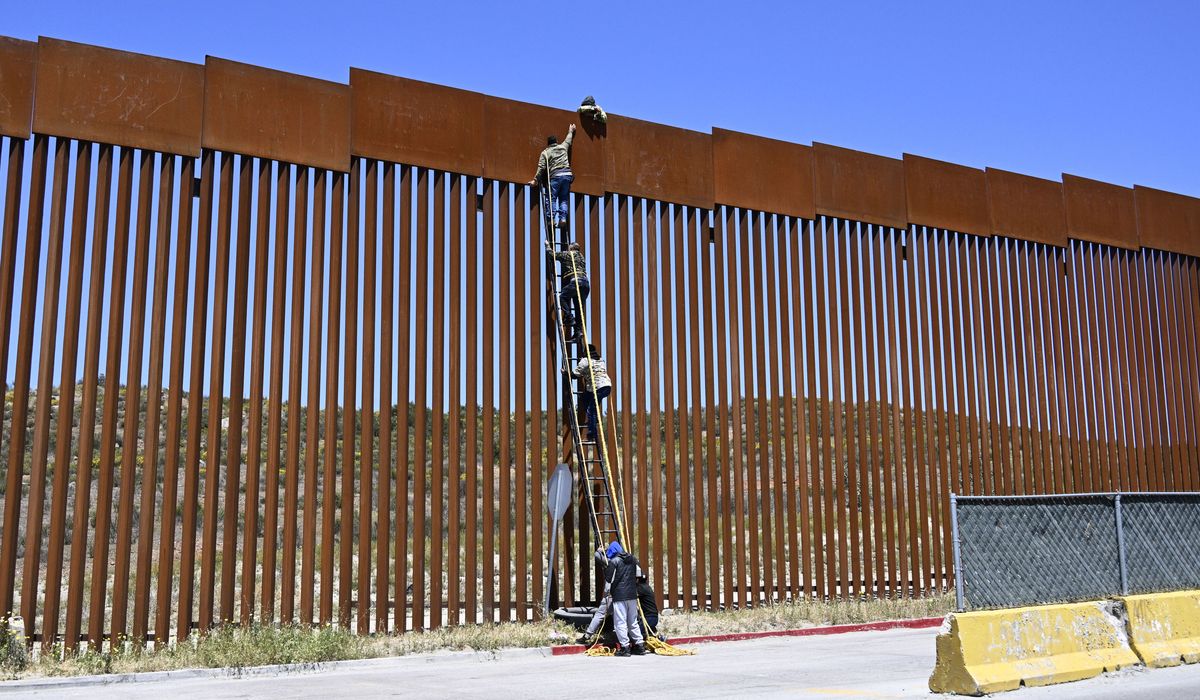

The Border Patrol has been undercounting migrant deaths along the U.S.-Mexico boundary for years, according to a report by Congress’ chief watchdog agency.
The revelation is something immigrant rights activists have long asserted. The Government Accountability Office confirmed it, finding that in eastern Arizona, a particularly deadly part of the border, the government’s count was off by more than 50% from independent tallies.
Customs and Border Protection, which oversees the Border Patrol, keeps a tally of migrants its personnel find, but it struggles to account for cases where some other entity finds the remains, investigators said.
That means the government may not have a complete picture of the growing chaos at the border, where fatalities appear to be on the rise.
“CBP has not collected and recorded, or reported to Congress, complete data on migrant deaths or disclosed limitations with the data it has reported,” the GAO said.
Homeland Security Department officials said they are trying to make improvements. Activists on the ground said they will believe it when they see it.
SEE ALSO: Democrat sounds alarm on Biden’s decision to lift Title 42
“I applaud their efforts, at least in terms of the rhetoric, but it remains to be seen whether they’ll actually follow through on this,” said Brad Jones, a volunteer with Humane Borders. “In years past, they’ve been brought to bear on undercounting migrant deaths and indicated they’d do something on this, but they just never seem to act on it.”
He called GAO’s report “a pretty serious rebuke” to the Border Patrol.
CBP has declined to release its current death tally for 2022, but it ended 2021 with 557 recorded fatalities along the southern border, breaking its previous record of 293 deaths in 2005.
Those numbers undersell the actual extent of death, GAO found.
In one region in eastern Arizona from 2015 to 2019, CBP tallied 339 deaths. But Humane Borders, which works with the medical examiner in Pima County, which ends up with custody of many of the bodies, counts 699 deaths for the same period.
Mr. Jones, a political scientist at the University of California, Davis, said even that tally is an undercount.
“We know 4,000 remains have been recovered at the U.S.-Mexican border over the last 20 years. What we don’t know, and what’s difficult to know, is what the actual true number is. I’ve seen estimates of three to eight times that number,” he said.
Jim H. Crumpacker, Homeland Security’s liaison to GAO, said CBP has made strides in improving its data collection and its deployment of migrant-saving methods.
He promised that the next report to Congress on missing migrants will shed light on trends in migrant rescues and deaths.
He did agree with all three of GAO’s recommendations, including one to make better use of external data such as death reports tallied by local medical examiners.
CBP officials told GAO investigators that they are aware of the higher counts from other sources and use them for “situational awareness,” even if they aren’t part of the agency’s official count.
The problem, GAO said, is that Congress has instructed CBP to use all the numbers at its disposal. Not only does the agency not do that, but it also hasn’t told Congress the limitations on its data, GAO said.
Amid the border chaos, the rising number of migrant deaths hasn’t grabbed much attention.
But both sides of the immigration debate say it’s a telling detail that says a lot about the current surge.
Border Patrol agents say the deaths are obvious results of the overall flow of people. More coming means more dying.
Immigrant rights activists, meanwhile, argue that the government’s immigration policies are responsible. They say stiffening borders over the past few decades has pushed migrants to more rugged and remote regions looking for viable crossings — and dying in the attempts.
In an attempt to save lives, CBP has placed 165 rescue beacons in highly trafficked corridors across the southern border. Migrants who reach a beacon can activate it and summon help.
More than 2,500 placards have been placed with instructions on getting help by dialing 911.
That can help with deaths from exhaustion and exposure, but it does little to solve the growing number of drownings.
It also can’t help with the rising number of deaths of migrants in vehicle collisions, spawned by smuggling drivers taking ever more chances, or the surging number of migrants dying after falling off the border wall.
It’s not just migrants who are paying a price.
On Friday, a member of the Texas National Guard went missing in the Rio Grande after helping rescue two migrants who appeared to be drowning. The soldier was deployed to the border as part of Gov. Greg Abbott’s attempt to patch gaps in the Biden administration’s border security.
As of Sunday, the search was continuing.
